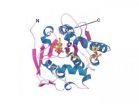(Press-News.org) Newborn screening performed in numerous states indicates that the incidence of the potentially life-threatening disorder, severe combined immunodeficiency, is higher than previously believed, at 1 in 58,000 births, although there is a high rate of survival, according to a study in the August 20 issue of JAMA.
The purpose of newborn screening is early detection of inborn conditions for which prompt treatments can reduce the risk of death or irreversible damage. The first heritable immune disorders to which newborn screening has been applied are those that together comprise severe combined immunodeficiency (SCID), a disorder that can result in life-threatening infections, making early detection and treatment critical. Population-based screening is the only means to detect SCID prior to the onset of infections in most cases. The incidence of SCID has been estimated to be 1 in 100,000 births. SCID was added to the national recommended uniform panel for newborn screened disorders in 2010, and currently 23 states, the District of Columbia, and the Navajo Nation screen approximately two-thirds of all infants born in the United States for SCID, according to background information in the article.
Antonia Kwan, Ph.D., M.R.C.P.C.H., of the University of California, San Francisco, and colleagues conducted the first combined analysis of more than 3 million infants screened for SCID in 10 states and the Navajo Nation. Infants born from the start of each participating program from January 2008 through the most recent evaluable date prior to July 2013 were included.
There were 52 SCID cases identified during the study period, an overall incidence of 1 in 58,000 births. The incidence was not significantly different in any state program but was higher in the Navajo Nation (1/3,500), attributed to a genetic mutation found in this population. Survival of SCID-affected infants through their diagnosis and immune reconstitution was 87 percent, 92 percent for infants who received transplantation, enzyme replacement, and/or gene therapy. Additional interventions for SCID and non-SCID T-cell lymphopenia (abnormally low level of certain white blood cells) included immunoglobulin infusions, preventive antibiotics, and avoidance of live vaccines.
"These findings support the view that SCID has previously been underdiagnosed in infants with fatal infections," the authors write.
"Now that infants with SCID are being detected at a very young age in diverse medical settings, it is imperative to tailor protocols for their treatment, including choice and pharmacokinetic monitoring of drugs administered to facilitate hematopoietic cell engraftment."
(doi:10.1001/jama.2014.9132; Available pre-embargo to the media at http://media.jamanetwork.com)
Editor's Note: Please see the article for additional information, including other authors, author contributions and affiliations, financial disclosures, funding and support, etc.
Editorial: Newborn Screening for Severe Combined Immunodeficiency
Progress and Challenges
"Infants born with SCID in the 27 states that do not screen for SCID have a greater chance of not being detected promptly, or at all, and are at increased risk of dying, compared with those born in the 23 states that do screen for SCID," writes Neil A. Holtzman, M.D., M.P.H., of the Johns Hopkins Medical Institutions, Baltimore, in an accompanying editorial.
"Although many states require their own pilot programs before a new screening test is added to their battery of tests, no state could amass as much data in a reasonable time frame as have Kwan et al. Before screening becomes universal in the United States, agreement is needed on what constitutes a positive T-cell receptor excision circle [a biomarker used to help identify SCID] screening test, on ensuring referrals to physicians competent to make a diagnosis, and on providing definitive therapy to every infant detected with SCID in every state."
(doi:10.1001/jama.2014. 9133; Available pre-embargo to the media at http://media.jamanetwork.com)
Editor's Note: The author has completed and submitted the ICMJE Form for Disclosure of Potential Conflicts of Interest and none were reported.
INFORMATION:
Study examines incidence, survival rate of severe immunodeficiency disorder in newborns
2014-08-19
ELSE PRESS RELEASES FROM THIS DATE:
Prevalence of HSV type 2 decreases among pregnant women in the Pacific Northwest
2014-08-19
In a study that included approximately 15,000 pregnant women, seroprevalence of herpes simplex virus (HSV) type 2 decreased substantially between 1989 and 2010 while there was no overall decrease for HSV type 1, but a slight increase among black women, according to a study in the August 20 issue of JAMA.
Shani Delaney, M.D., and Anna Wald, M.D., M.P.H., of the University of Washington, Seattle, and colleagues examined trends in the seroprevalence of HSV-1 and HSV-2 among pregnant women who delivered newborns at the University of Washington Medical Center between January ...
UCSF-led study finds SCID previously underdiagnosed in infants with fatal infections
2014-08-19
Severe combined immunodeficiency (SCID), a potentially life-threatening, but treatable, disorder affecting infants, is twice as common as previously believed, according to a new study that is the first to examine the national impact of this newborn screening test.
The study is the first combined analysis of more than 3 million infants screened for SCID in 10 states and the Navajo Nation. Infants from participating programs born from the start of the first pilot program in January 2008 through July 2013 were included.
In May, 2010, SCID was the 29th condition added ...
In-utero methadone, Subutex exposure could alter gene expression, cause severe Neonatal Abstience Syndrome
2014-08-19
(Boston) – Some infants born with neonatal abstinence syndrome (NAS) secondary to in-utero opioid exposure have a more difficult time going through withdrawal than others, but the underlying reasons are not well understood. While genetic and epigenetic (when genes are turned on or off) changes have recently been identified as potential factors, researchers at Boston University School of Medicine (BUSM) and Boston Medical Center (BMC) conducted a first of its kind study to identify some of these epigenetic changes that may influence symptom severity.
The researchers focused ...
Novel oral anticoagulant prescriptions soar, but at a high cost
2014-08-19
Philadelphia, PA, August 19, 2014 – Warfarin, the longtime standard treatment for atrial fibrillation, is facing competition from new options in the anticoagulant drug marketplace including dabigatran, rivaroxaban, and apixaban. A new study documents the rapid adoption of these novel oral anticoagulants (NOACs) into clinical practice. By mid-2013 NOACs accounted for 62% of all new anticoagulant prescriptions yet this represents 98% of total anticoagulant-related drug costs. Findings are published in The American Journal of Medicine.
Atrial fibrillation (AF) is a serious ...
Markey researchers develop web-based app to predict glioma mutations
2014-08-19
new web-based program developed by University of Kentucky Markey Cancer Center researchers will provide a simple, free way for healthcare providers to determine which brain tumor cases require testing for a genetic mutation.
Gliomas – a type of tumor that begins in the brain or spine – are the most common and deadly form of brain cancer in adults, making up about 80 percent of malignant brain cancer cases. In some of these cases, patients have a mutation in a specific gene, known as an IDH1 mutation – and patients who have this tend to survive years longer than those ...
Philippine tarsier gets boost from Kansas research, and genetic proof of a new variety
2014-08-19
LAWRENCE — It's not a monkey. It's not a lemur. It's not an African Bush Baby or even a Madagascan Mouse. Meet the Philippine tarsier: a tiny, adorable and downright "cool" primate from Southeast Asia.
"It's really not like any animals that Americans are familiar with," said Rafe Brown, curator-in-charge at the University of Kansas' Biodiversity Institute. "A tarsier has giant eyes and ears; an extremely cute, furry body; a long tail with a furry tuft at the end; and interesting expanded fingers and toe tips that look a bit like the disks on the digits of tree frogs."
Brown ...
New vaccine shows promise as stronger weapon against both tuberculosis and leprosy
2014-08-19
In many parts of the world, leprosy and tuberculosis live side-by-side. Worldwide there are approximately 233,000 new cases of leprosy per year, with nearly all of them occurring where tuberculosis is endemic.
The currently available century-old vaccine Bacille Calmette-Guerin, or BCG, provides only partial protection against both tuberculosis and leprosy, so a more potent vaccine is needed to combat both diseases. UCLA-led research may have found a stronger weapon against both diseases.
In a study published in the September issue of the peer-reviewed journal Infection ...
Seafood substitutions can expose consumers to unexpectedly high mercury
2014-08-19
New measurements from fish purchased at retail seafood counters in 10 different states show the extent to which mislabeling can expose consumers to unexpectedly high levels of mercury, a harmful pollutant.
Fishery stock "substitutions"—which falsely present a fish of the same species, but from a different geographic origin—are the most dangerous mislabeling offense, according to new research by University of Hawai'i at Mānoa scientists.
"Accurate labeling of seafood is essential to allow consumers to choose sustainable fisheries," said UH Mānoa biologist Peter ...
Engineering new bone growth
2014-08-19
CAMBRIDGE, MA -- MIT chemical engineers have devised a new implantable tissue scaffold coated with bone growth factors that are released slowly over a few weeks. When applied to bone injuries or defects, this coated scaffold induces the body to rapidly form new bone that looks and behaves just like the original tissue.
This type of coated scaffold could offer a dramatic improvement over the current standard for treating bone injuries, which involves transplanting bone from another part of the patient's body — a painful process that does not always supply enough bone. ...
Antibacterial soap exposes health workers to high triclosan levels
2014-08-19
Handwashing with antibacterial soap exposes hospital workers to significant and potentially unsafe levels of triclosan, a widely-used chemical currently under review by the U.S. Food and Drug Administration, according to a study led by researchers from UC San Francisco.
Triclosan, a synthetic antibacterial agent, is found in thousands of consumer products, including soaps, cosmetics, acne creams and some brands of toothpaste. The FDA is reviewing its safety based on a growing body of research indicating that it can interfere with the action of hormones, potentially causing ...


